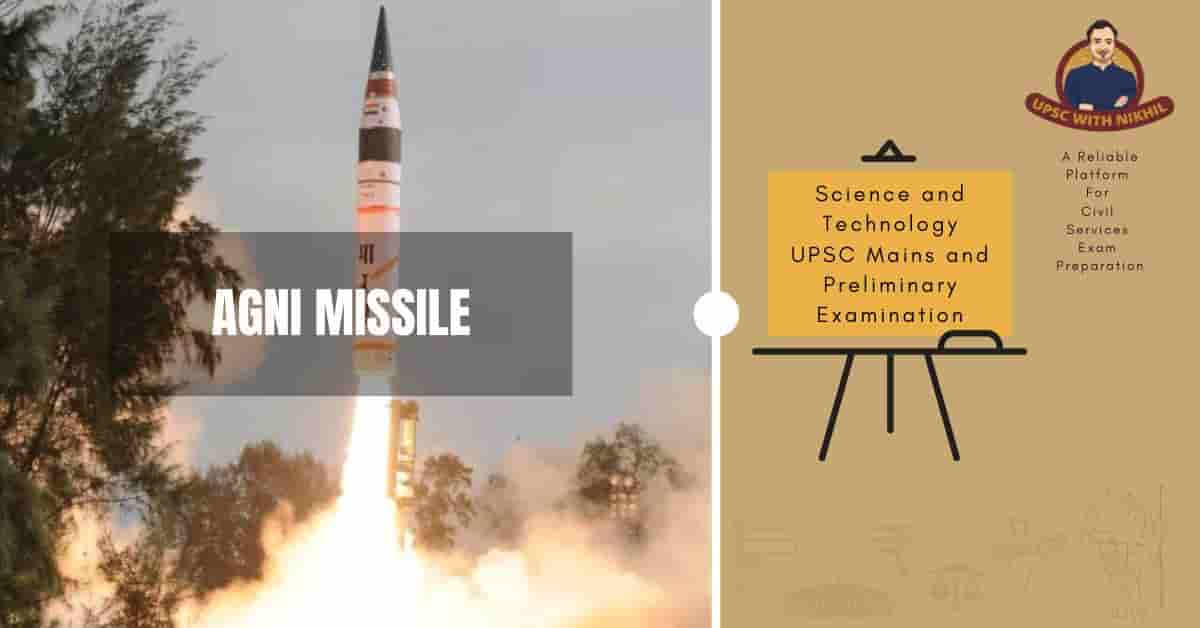Agni Missile
Agni missiles are long-range surface-to-surface ballistic missiles that can carry nuclear bombs.
Agni-I was the first missile in the series, and it was tested in 1989 as part of the Integrated Guided Missile Development Program (IGMDP).
Because of its strategic relevance, the Agni missile programme was removed from the IGMDP after its success.
It was recognised as a special programme in India's defence budget, with sufficient funding for its development. The Agni missiles have been brought into service since November of this year.
AGNI CLASS OF MISSILES:
They constitute the backbone of India's nuclear-weapons arsenal.
Range:
Agni I has a range of 700-800 kilometres.
Agni II has a range of around 2000 kilometres.
Agni III has a range of almost 2,500 kilometres.
Agni IV has a range of about 3,500 kilometres and can be launched from a road mobile launcher.
Agni-V: The Agni-V is the longest missile in the Agni series, with a range of nearly 5,000 kilometres.
Agni-P (Prime) is a canisterized missile with a range of 1,000 to 2,000 kilometres. It will replace Agni-I missile.
ABOUT AGNI PRIME
• Agni-P is an improved variation of the Agni class from a new generation (under IGMDP - Integrated Guided Missile Development Program).
• It's a canisterized missile with a range of 1,000 to 2,000 kilometres.
• Missile canisterization decreases the time it takes to fire a missile while also enhancing its storage and mobility.
• Many new technologies have been introduced, including composites, propulsion systems, unique guidance and control mechanisms, and cutting-edge navigation systems. India's credible deterrence capabilities would be bolstered by the Agni-P missile.
• Agni-P has improved metrics such as manoeuvrability and accuracy when compared to earlier Agni class missiles.
ABOUT AGNI-V
• The Agni-V is India's most advanced surface-to-surface ballistic missile.
• It's a three-stage, solid-fuelled missile that stands 17 metres tall and can carry a nuclear payload weighing 1.5 tonnes.
• Agni-V is a fire-and-forget missile that can only be halted by interceptor missiles once launched.
• The Integrated Guided Missile Development Program was responsible for its development (IGMDP).
• Dr. A.P.J. Abdul Kalam conceived the IGMDP in order for India to achieve missile technology self-sufficiency. It was sanctioned by the Indian government in 1983 and completed in March of that year.
• Prithvi, Agni, Trishul, Nag, and Akash are the five missiles developed under this programme (P-A-T-N-A).
CANISTER BASED LAUNCH SYSTEM
Canister-based launch system—serves as a shipping container, a shelter while storage aboard a ship, and gives operational flexibility.
A canister launch system can be either hot or cold, with the missile igniting in the cell after being released by gas created by a gas generator that is not part of the missile.
Cold launch is safer than hot launch because the ejection system will automatically expel the missile if it fails. It will be a chilly launch in the case of Agni V.
The problem with hot launches is the heat generated by the missile at the time of launch. The hot launch is preferable for small missiles because the ejection is handled by the missile's own engine.



